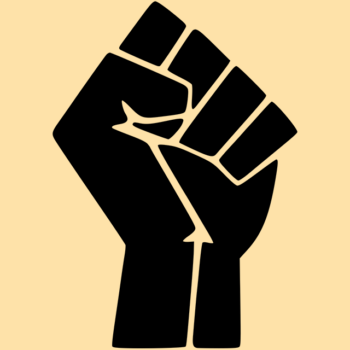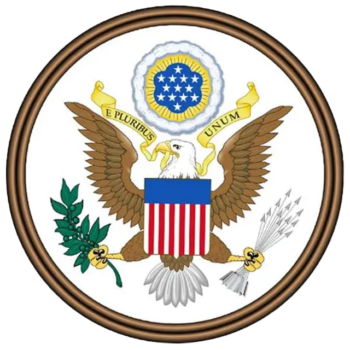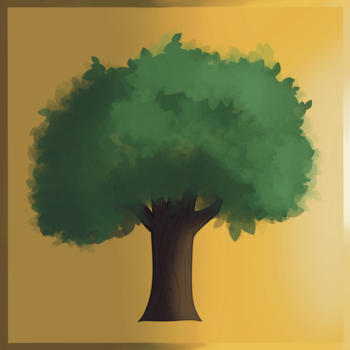Definition:
“Freedom” is the belief or perception of being without significant constraint or oppression.
“Liberty” is freedom within certain boundaries or rules designed to maintain order.
Etymology:
The word “freedom” originates from Old English “frēodōm,” which combines “frēo” (“free”) with the suffix “-dōm.” The suffix “-dōm” comes from Proto-Germanic “-dōmaz,” meaning “judgment,” “authority,” or “decree,” and originally carried connotations of rulership, decision-making, and states of being under a specific judgment or condition. Over time, “-dōm” evolved to signify a “state or condition” more broadly, as seen in words like “kingdom” and “wisdom.”
In the case of “freedom,” the term reflects an ancient concept of autonomy and self-determination, where being “free” was recognized within a legal or societal framework. Interestingly, “-dōm” shares its roots with words like “doom” (a judgment or fate) and “damn” (as in “God damn,” meaning a consequence of fantasizing). This highlights the suffix’s deep ties to notions of judgment, authority, and the state of being under or beyond such decrees.
The word “liberty” comes from the Latin word “libertas,” which means “freedom” or “being free.” This came from “liber,” meaning “free person.” It later passed into Old French as “liberté” and then into English in the 14th century as liberty, keeping its meaning of freedom.
The word “liberty” comes from the idea of sailors being allowed to leave their ship when it docked, but they always had to return. It wasn’t complete freedom—just a temporary break under strict conditions. This reflects how liberty often implies limited or controlled freedom, rather than complete independence.
Description:
Existence is infinite, and we are always within something. Life is a series of enclosures, each defining boundaries that confine us. We start inside the womb. When we leave the womb, we are placed in a crib. When we leave the crib, we are still within a room. The room is inside a house, and the house is surrounded by a yard. Beyond the yard is the neighborhood. Leaving the neighborhood, we enter the municipality, then the county, then the country. These are all within the continent, and the continent is part of the planet. The planet orbits within the solar system, which is part of the galaxy. The galaxy exists within our universe, and most likely there’s a metaverse outside of that.
At every stage, we remain confined within something larger. Freedom is an illusion because we are always inside a boundary. No matter how far we go, there is always another layer enclosing us.
Articles:
Capitalism (The Global Monetary System)
Definition: “Capitalism” is a belief that ownership exists and how it can be improved. Capitalism is most commonly defined as an economic system characterized by private ownership of the means…
Being Free:
The word “freedom” is the same as the word “free.” The difference between “freedom” and “free” lies in how we use them grammatically (noun vs. adjective/verb), but this is a matter of language mechanics, not meaning. The core concept they express—the absence of constraints—is fundamentally the same.
Historically, the word “free” or “freedom” has been deeply tied to slavery.
A person who is not a slave, or no longer a slave, is free. This is an illusion. It is the trickery of language that causes the person who believes they are free to stay imprisoned in the scheme of language. The exoteric meaning of “free” is “no cost.” Meaning that a person being free, is still a slave, as a slave by definition is at no cost for its slave master.
There are several sayings expressing how “free” is an illusion:
- There’s no such thing as a free lunch.
- You don’t get something for nothing.
- You pay for what you get.
- You get what you pay for.
- Everything has its price.
- Nothing comes without a price.
- All good things come with a cost.
- Nothing in life is free.
- The best things in life aren’t free.
- Free things often come at a greater cost.
- There’s always a catch.
- Freedom isn’t free.
- If it seems too good to be true, it probably is.
- What you gain in one hand, you lose in the other.
- No pain, no gain.
Fight for Freedom:
The irony of “freedom fighters” is worth noting. While the term suggests noble efforts to achieve liberty, it has been used to describe groups whose actions often lead to oppression or violence against others. For example, during the Cold War, various militias and insurgents funded by superpowers were labeled “freedom fighters.” These groups sometimes committed atrocities against civilians, enforcing their own forms of domination. The label “freedom fighter” becomes a tool of propaganda, obscuring the damage caused by these actions.
War is often sold to the public as a fight for freedom. Leaders and governments claim they are defending rights, protecting people, or standing against oppression. But behind these words, it’s often very different. Many times, these wars have little to do with freedom and much to do with power, control, and profit.
Common sayings like “freedom isn’t free” or “we fight so others can be free” are often used to rally support. These phrases sound noble but are often wielded as tools to obscure the actual costs and motives of war. They simplify complex situations into a battle of good versus evil, making it easier to justify violence.
Take, for example, the concept of “liberation.” Warmongers frequently use it as a shield. They say they want to liberate a country or a people, but the methods they use—bombings, invasions, and destruction—often harm those very people the most. Cities are destroyed, families are torn apart, and lives are shattered.
History is full of examples where war was justified as a fight for freedom but ended up being about something else entirely. The Iraq War, for instance, was framed as a mission to bring democracy and freedom to the Iraqi people. Instead, it led to years of instability, countless civilian deaths, and the rise of extremist groups. Similarly, the Vietnam War was portrayed as a fight against communism to protect freedom, but it resulted in immense suffering and the loss of millions of lives.
Even earlier, colonial powers often claimed to “civilize” or “free” the people they conquered. These so-called “freedom missions” brought slavery, exploitation, and cultural destruction to the nations they invaded. Leaders like Napoleon Bonaparte and more recently George W. Bush used freedom as a banner under which to justify their actions, yet the outcomes often imprisoned people in cycles of violence and poverty.
Another example is the Soviet invasion of Hungary in 1956. The Soviet Union claimed to be “defending socialism” and “liberating the working class” while brutally suppressing a popular uprising. Thousands were killed or imprisoned, and freedom was further restricted. Similarly, during the Afghan-Soviet War, the Soviet Union argued it was aiding the Afghan people, but the invasion led to decades of conflict and suffering.
The so-called “War on Terror” has also been a glaring example of freedom rhetoric being used to justify violence. The U.S. invasion of Afghanistan and subsequent military actions in Pakistan and elsewhere were presented as efforts to defeat terrorism and promote freedom. Yet, these actions displaced millions, caused widespread civilian casualties, and destabilized entire regions.
During the Spanish-American War, the United States claimed to be freeing Cuba from Spanish rule. While Spain’s colonialism was indeed oppressive, the U.S. quickly turned Cuba into a de facto puppet state, controlling its economy and politics for decades. Similarly, the Philippines was promised liberation, but the U.S. engaged in a brutal conflict that left hundreds of thousands dead, only to impose its own rule.
In World War II, while the Allies fought against the horrors of fascism, some nations used the rhetoric of freedom while maintaining colonial empires. Britain, for example, spoke of fighting for freedom and democracy but continued to exploit its colonies in India, Africa, and beyond.
Freedom holds a prominent place in the Great Seal of the United States of America, symbolized by the eagle grasping arrows and an olive branch, representing war and peace. The motto “E pluribus unum” (Out of many, one) reflects unity rather than explicit freedom, yet the broader ideals of liberty and freedom permeate the symbolism of the U.S. However, the use of “freedom” to justify wars contradicts the values these symbols claim to represent, revealing a stark hypocrisy.
Free Country:
When people talk about a “free country,” they usually mean a place where citizens can make their own choices, express their opinions, and pursue opportunities without unnecessary interference from the government or other entities. However, what “free” actually means can differ depending on who you ask and what they value.
The USA is not the only country considered free, but it is often the loudest about its freedoms, proudly calling itself “the land of the free and the home of the brave.” Americans frequently emphasize their nation’s liberties, making it a prime example for discussion. A typical American patriot might present the popular quote: “I love the freedoms we have here.” So what do they mean by “freedoms” in a free country?
In the USA, freedom is often associated with political rights like free speech, freedom of the press, freedom of religion, and the right to assemble—all protected by the First Amendment. These rights are held up as pillars of American democracy. Similarly, the right to vote is celebrated as a cornerstone of freedom, but it is clearly an illusion of choice. The choices presented to voters are always pre-approved by those in power, and the system is designed to maintain control rather than offer genuine representation.
Moreover, the notion of a free press is undermined by the fact that most media outlets are owned by a handful of corporations. Independent voices that challenge corporate interests often fail to reach a wide audience or face financial ruin due to advertiser-driven content.
Personal freedoms in the USA include the right to make choices about lifestyle, relationships, and beliefs, along with legal protections like due process, equal protection under the law, and safeguards against unlawful searches and seizures. Freedom of religion is supposed to ensure everyone can choose their faith or opt out entirely. However, in practice, religion is often systematically and socially pushed onto individuals, eroding the concept of freedom from religion for those who wish to live without it.
Cultural freedom is another aspect of American society, allowing people to experience diversity and access different cultural and social expressions. Yet, this too is limited by systemic inequalities and societal pressures.
Economic freedom is another hallmark of American ideals. This includes the ability to own property, start a business, and participate in a competitive market. However, in practice, capitalism often equates economic freedom with the freedom to exploit others for profit. The idea of meritocracy, where success is based on individual effort, is also frequently debated as systemic barriers prevent equal opportunities.
While many Americans take pride in these freedoms, critiques abound. Economic inequality leaves “true freedom” out of reach for most, as it is only available to those who are filthy rich. Systemic oppression, including racism, gender inequality, and mass incarceration, further restricts freedoms.
When people say they “love the freedoms” they have, it reflects their brainwashing, as they believe a prison of fantasy is freedom.
Symbolism:
Articles:
Ladder
Definition: A “ladder” is a device or tool used to climb up or down heights. It typically consists of a series of horizontal rungs attached to two longer vertical side…
Peace
Definition: “Peace” means the absence of noise or disturbance. Etymology: The English word “peace” originates from the Old French term “paix,” derived from the Latin “pax” (genitive pacis), meaning “peace,…
Solidarity Fist
Description: The “solidarity fist,” also known as the “raised fist” or “clenched fist,” is a symbol of unity, strength, and solidarity. It has been used by various social justice movements,…
The Great Seal of the United States of America
Definition: “The Great Seal of the United States” is a national seal that symbolizes the authority and sovereignty of the federal government. Description: The Great Seal was adopted by the…
Tree
Definition: A “tree” is a large perennial plant that typically has a trunk supporting branches and leaves. Etymology: The word “tree” comes from the Old English “trēow,” which is related…
Religion:
Adherents to religion most often believe they are free while being confined by rigid doctrines, societal pressures, and the mental frameworks imposed by their faiths.
In the Bible, in Galatians 5:1, it says: “It is for freedom that Christ has set us free. Stand firm, then, and do not let yourselves be burdened again by a yoke of slavery.” When interpreted exoterically (mirrored meaning), this verse suggests that belief in Christ is designed to imprison individuals in a fantasy, as it relies on adherence to specific doctrines to define “freedom.” Additionally, the Bible frequently refers to believers as “slaves of God” or “slaves of Christ.” For example, Romans 6:22 states, “But now that you have been set free from sin and have become slaves of God, the benefit you reap leads to holiness, and the result is eternal life.” This language reinforces the paradox where believers are asked to embrace slavery to achieve spiritual freedom.
In the Quran 33:36, it says: “It is not for a believing man or a believing woman, when Allah and His Messenger have decided a matter, that they should [thereafter] have any choice about their affair.” This verse emphasizes complete submission to divine will, framing freedom as obedience. It creates a paradox where personal autonomy is surrendered to achieve spiritual liberation.
In the Quran 24:33, it says: “And those who seek a contract [for eventual emancipation] from among whom your right hands possess—then make a contract with them if you know there is within them goodness and give them from the wealth of Allah which He has given you.” This verse addresses the emancipation of slaves but also reflects the historical context where freedom was conditional and granted by others, tying it to the institution of slavery. The belief that servitude could lead to spiritual growth exemplifies the paradox of achieving freedom through imposed limitations.
In the Book of Mormon, in Helaman 14:30, it says: “Ye are free; ye are permitted to act for yourselves; for behold, God hath given unto you a knowledge and He hath made you free.” While this verse emphasizes the idea of moral agency, it also ties freedom to adherence to God’s commandments, creating a paradox where disobedience results in spiritual bondage. This reflects a recurring theme in religious texts where submission to divine will is equated with true freedom. Another example comes from Mosiah 2:21: “I say unto you that if ye should serve him who has created you from the beginning, and is preserving you from day to day, by lending you breath, that ye may live and move and do according to your own will, and even supporting you from one moment to another…ye are still unprofitable servants.” This verse reinforces the notion that believers are eternally indebted to God, framing submission as the path to spiritual liberation.
In some Buddhist traditions, monks and nuns are required to follow an extensive code of discipline (Vinaya), which governs every aspect of their lives. This strict adherence to rules is said to pave the way for enlightenment and ultimate liberation from suffering (nirvana). However, this rigorous discipline is obviously a form of imprisonment, where freedom is equated with surrendering personal autonomy to an exhaustive list of regulations. For example, rules regarding food consumption, physical conduct, and daily routines are designed to curb worldly attachments but can also foster a rigid, constrained lifestyle that some may find stifling rather than liberating.
Hindu philosophy teaches that moksha, or liberation, is achieved by freeing oneself from the cycle of birth and rebirth (samsara). This freedom is reached through complete surrender to dharma (cosmic law) and devotion to Brahman (the ultimate reality). However, moksha is often tied to strict adherence to caste duties and intricate rituals. These societal and spiritual obligations can feel like a form of imprisonment, where true freedom is conditional upon fulfilling roles imposed by tradition and religious hierarchy. For example, the Bhagavad Gita 18:66 states, “Abandon all varieties of dharma and just surrender unto Me. I shall deliver you from all sinful reactions. Do not fear.” This emphasizes submission and surrender as prerequisites to spiritual freedom, highlighting the paradoxical nature of liberation through subservience.
In Sikhism, the concept of freedom is deeply tied to submission to God’s will and devotion to righteous living. This includes strict adherence to spiritual practices and codes of conduct. For instance, the Guru Granth Sahib teaches: “One who calls himself a disciple of the Guru must rise in the early hours and meditate on the Lord’s Name.” (Guru Granth Sahib, p. 305). While this devotion is seen as a path to liberation, it also imposes a rigorous lifestyle where freedom is equated with self-discipline and surrender to divine authority, creating a framework where personal autonomy is limited by spiritual obligations.
Freedom in Confucianism is deeply tied to fulfilling one’s duties within societal and familial hierarchies. This includes concepts such as filial piety (xiao), where individuals are expected to honor and obey their parents and elders as a moral obligation. For example, the Analects of Confucius teach: “The superior man acts in accordance with propriety; he thereby reveres his nature and follows the path of learning.” (Analects, 12:1.) This suggests that freedom is achieved through strict adherence to societal norms and self-discipline. The emphasis on propriety and harmony can create a form of imprisonment, as individuals are bound by rigid expectations that prioritize collective order over personal autonomy. Another example is the concept of “rectification of names” (zhengming), where people are expected to conform to their assigned roles and titles, such as ruler, subject, father, or son. This reinforces submission to a predetermined structure as the path to harmony and, consequently, freedom.


